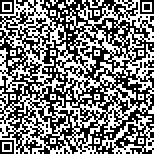下载中心
优秀审稿专家
优秀论文
相关链接
摘要

以黄河源玛多县为研究区,利用无人机分别于2017年冬春季开展了航拍调查,航拍有效面积达326.6 km2,获取影像23784张,建立了藏野驴、藏原羚、岩羊等野生动物,以及牦牛、藏羊和马等家畜的无人机图像解译标志库。通过人机交互方式解译,获取调查样带内的种群数量:藏野驴的样带密度为1.15只/km2,藏原羚为0.61只/km2,岩羊为0.62只/km2,家养牦牛为4.12只/km2,家养藏羊为7.34只/km2,马为0.06只/km2。利用冷暖季草场的估算方法,通过地面同步调查验证、统计数据验证,估算出玛多县藏野驴、藏原羚和岩羊,以及家牦牛、藏羊和马的种群数量为:藏野驴17109头,藏原羚15961只,岩羊9324只,牦牛70846头,藏羊102194只,马1156匹。大型野生食草动物藏野驴、藏原羚和岩羊总计8.57万羊单位;家畜藏羊、牦牛和马总计38.90万羊单位;大型野生食草动物和家畜总计47.5万羊单位。大型野生食草动物羊单位数量与家畜羊单位数量之比为1∶4.5。并分析了野生动物分布密度与栖息地生境因子的关系:藏野驴偏好选择高程4200—4400 m,坡度为2°—5°,离农村居民点距离1—2 km和4—5 km,离水源距离小于1 km,离公路距离2—3 km和4—5 km的范围内,草地盖度60—80%。藏原羚偏好选择高程4100—4200 m和4400—4500 m,坡度为大于5°,草地盖度80%以上,离农村居民点距离2—3 km,离水源距离小于1—2 km,离公路距离小于1—2 km和4—5 km的范围内。岩羊偏好选择高程4100—4200 m,坡度为大于5°,草地盖度较低,离农村居民点距离小于1 km,离水源距离小于1—2 km,离公路距离大于5 km的范围内。与传统的地面调查方法相比,基于无人机遥感的大型野生食草动物种群数量调查,具有快速、经济、可靠等优点,为今后野生动物调查提供了一种有效、可靠的技术途径。
We used Unmanned Aerial Vehicles (UAVs) to conduct aerial surveys in the winter/spring of 2017 to determine the number and distribution of large wild herbivores and their effects on grassland ecosystems in Maduo County on the Qinghai-Tibet plateau. The effective area of the aerial surveys was 326.6 km2, and 23784 images were acquired. Interpretation tag libraries for UAV images were set up for wild animals, including Kiang, Tibetan gazelle, and blue sheep, and for livestock, such as yaks, Tibetan sheep, and horses. The population in the survey transect was obtained via the interpretation of human-computer interaction. Statistical methods based on cold- and warm-season grasslands for estimating densities and numbers were compared and verified using a synchronized ground survey and statistical data.
The population estimates for kiang, Tibetan gazelle, blue sheep, domestic yak, Tibetan sheep, and horses were 17109, 15961, 9324, 70846, 102194, and 1156, respectively. The densities ranged from 1.15/km2 for kiang, 0.61/km2 for Tibetan gazelle, and 0.62/km2 for blue sheep to 7.34/km2 for domestic sheep. The ratio of large wild herbivores in sheep units to livestock in sheep units was 1:4.5.
The relationship between the distribution density of wild animals and the ecological factors of the habitat was analyzed. Kiangs preferred elevations of 4200 m to 4400 m, slopes of 2° to 5°, and grass cover of 60% to 80%. Tibetan gazelles preferred elevations of 4100 m to 4200 m or 4400 m to 4500 m, slopes of more than 5°, and grass cover of more than 80%. Blue sheep preferred elevations of 4100 m to 4200 m, slopes of more than 5°, and low grass cover. All wild species preferred areas that were close to water and far from roads. Compared with traditional ground survey methods, UAV remote sensing surveys of large wild herbivore populations are fast, economical, and reliable, and they provide an effective means to survey wild animals in the future.

